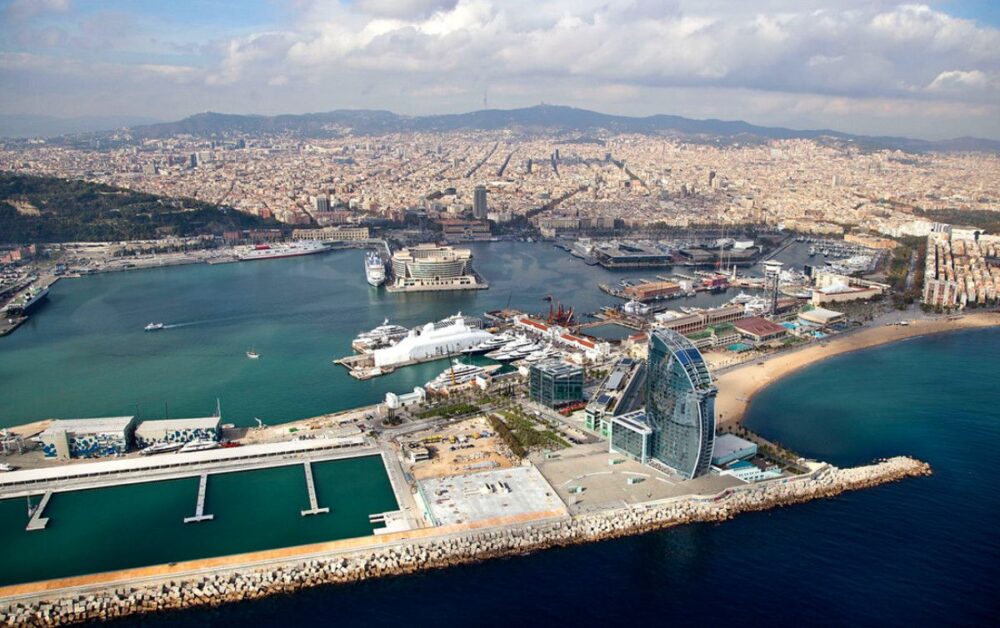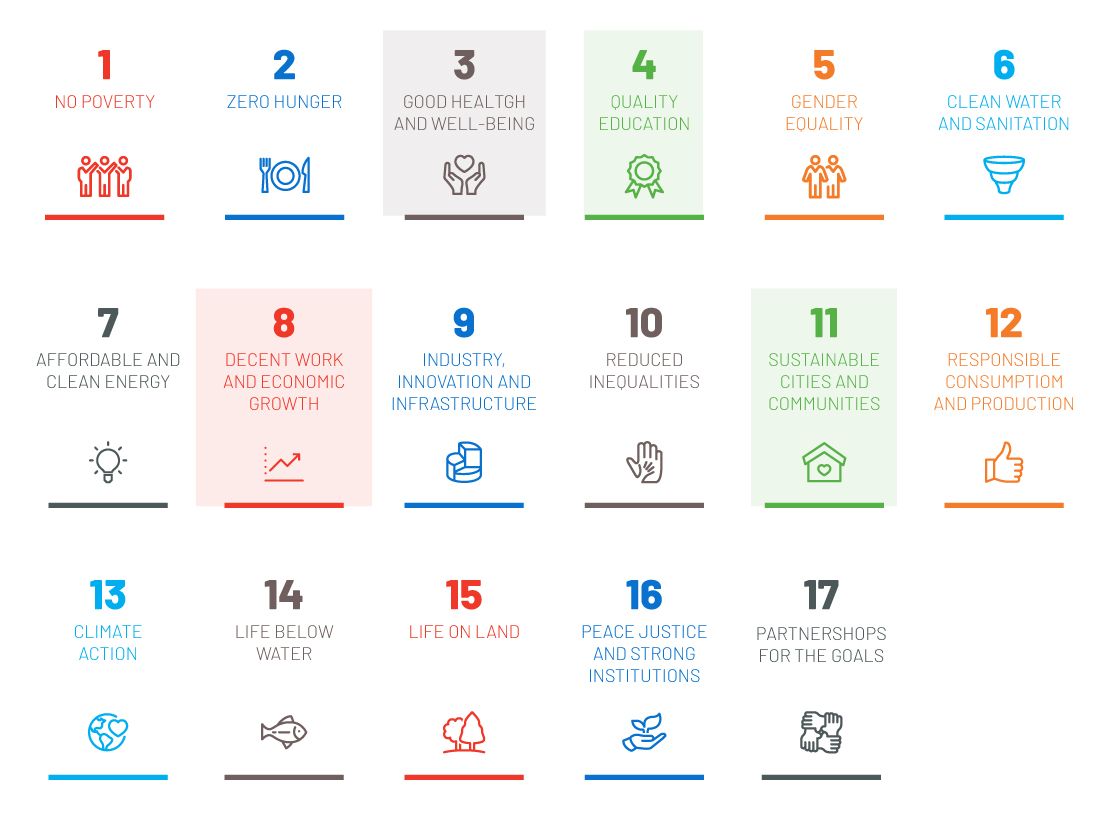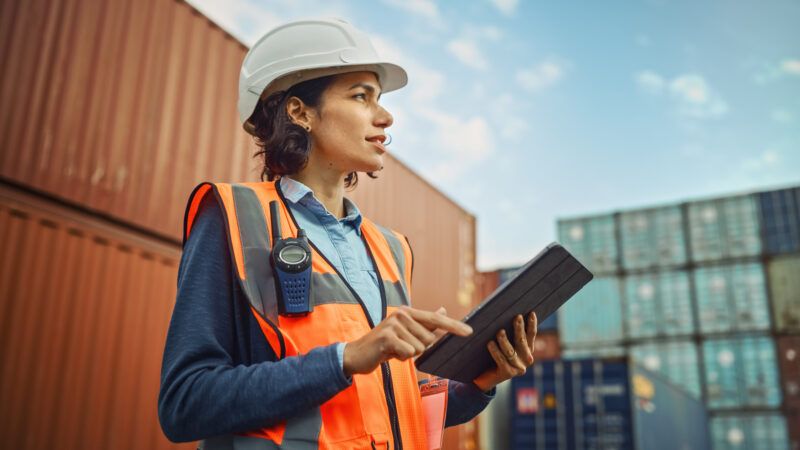 The Port of Barcelona conception of sustainability is threefold: environmental, economic and social. [Image by Port of Barcelona]
The Port of Barcelona conception of sustainability is threefold: environmental, economic and social. [Image by Port of Barcelona]
Ports And Their Role In Sustainable Development
If we understand economic development as "the capacity of countries or regions to generate wealth in order to maintain the social and economic prosperity or well-being of their inhabitants" (from the definition on the Spanish Wikipedia page), we must also understand that this capacity involves many dimensions that range from developing human capital and critical infrastructure, to boosting regional competitiveness, environmental sustainability, social inclusion, health, safety and even literacy.

Pedro Arellano Gil is Deputy General Manager at Port of Barcelona, patron of Fundació Cares, consultant at PortVell de Barcelona and the European Intermodal Transport School, as well as in technology-based start-ups.
 The Port of Barcelona conception of sustainability is threefold: environmental, economic and social. [Image by Port of Barcelona]
The Port of Barcelona conception of sustainability is threefold: environmental, economic and social. [Image by Port of Barcelona]
But how do we balance the economic concerns with those of the other sort in order to ensure that international trade is sustainable while also beneficial to the supply chain? The response can only be multidisciplinary: broadening the scope in assessing the costs and benefits and taking advantage of port activity to make sustainability a mechanism that promotes economic development in the zone and, therefore, the country.
It was with this purpose that the Sectoral Sustainability Plan was created in 2016: to address sustainable development of the port community in order to take actions that go beyond the individual solutions of each of the organisations that make up the sector.
To do so, the Port's conception of sustainability is threefold: environmental, economic and social. The policies of ports must be interrelated through these three dimensions, using a comprehensive approach to make the most of their potential and strengthen the port processes seeking to develop a sustainable port in the long term.
Despite having been concerned actively about the environment for more than 20 years, in 2017 a plan to improve air quality was launched with 53 actions that have effectively reduced polluting emissions from port activities. Noteworthy among these is the commitment to LNG as the fuel for vessels, lorries and machinery at the terminal, as well as renovation of the fleet of port vehicles and discounts for the most energy efficient vessels. The end goal is to make the Port of Barcelona the main LNG distribution hub in the Mediterranean.
The Sectoral Sustainability Plan was created in 2016 to adress to the sustainable development of the port community, taking actions that go beyond the individual solutions of each of the organizations that make up this sector.
In terms of economic activity, the industrial cluster comprising the 500 companies in the port community generates wealth of €3.53 billion (1.7% of the Catalan GDP) and 1.1% of all employment in Catalonia (41,200 jobs). All of this translates into benefits for the industrial and commercial fabric of the community to the tune of €9.262 billion (equivalent to 6% of the GDP and 5.4% of employment).
But the port's success does not depend only on its ability to dynamize the economy and generate employment, but also on intangible issues like society's trust and its ties to residents' prosperity. Sustainable development means meeting the needs of clients, but also those of the wide range of interest groups with ties to the port. It is important that the metropolis feel strongly and positively that having a port is a plus, which makes it easier to put down roots in the territory. The port was created alongside Barcelona, around the first century BC, and ever since has maintained the same purpose: connecting territories and fostering trade among people beyond its borders, thus facilitating their lives. Right now, it is important to work on this original idea of the positive relationship between the infrastructure and the inhabitants of its metropolis. The Sectoral Sustainability Plan and the initiatives arising from it are key tools for achieving this.
The success of the port does not depend solely on its ability to dynamise the economy and create employment, but also on intangible aspects, such as the trust generated in society or its connection with the prosperity of its citizens.
How is this influence created?
To create this type of synergy, you have to meet the expectations that the various interest groups have for this facility, although it doesn't much matter whether the response comes from the public administration or through private initiative. To make this relationship stronger and more positive, first the port's relationship to its stakeholders must change. This starts by mapping these interest groups (in our case, there are more than 30, which each have their own subgroups), and then moves on to identifying port partners (services for vessels, residents, passengers, public administrations, etc.) and identifying their corresponding expectations. From there, work begins in the spaces where the interest groups and port partners overlap.
Then, a sustainability plan is drawn up, which is what provides a series of routines on an operational level to give a down-to-earth way to approach all of these expectations: priorities in terms of lines, activities within these lines, raising awareness of the results, etc.
Each year, the Annual report classifies the results obtained in terms of figures, as well as good practices, creating a snapshot of how things are progressing in terms of sustainability. From this report, areas for improvement and shortcomings are detected, and initiatives are proposed to address these, to be carried out by the port community, in line with the UN sustainable development goals (SDG).

The Sustainability Plan offers a series of routines that help to get off the ground as they will address all the expectations of the interest groups that make up the port community: what lines to prioritize, what activities to carry out within these lines, the dissemination of results, etc.
A new way to look at the port
It is important to remember that, on its own, a port facility cannot tackle complex issues like the balance or imbalance in global trade, no matter how concerned it is about this. Its responsibility is to focus on tackling issues in its own 'area of influence', thus fostering more comprehensive, progressive and sustainable development in its radius of action.
In any case, a port can come to have an impact on other global 'areas of concern' when it takes advantage of its capacity to influence the international bodies to which it belongs. This type of actions also means being able to work from the ports to promote the facility's sustainability.
This process of developing the port's influence is unique given the human factor, supporting employability of individuals from the metropolis in the port sector, working to counter external factors that this industrial activity may generate for them, and turning these individuals into passionate defenders of a public good such as the port. Having a positive impact on the human factor is always crucial to sustainability.

Today, the port community has a close eye on sustainability and has already taken many measures associated with his issue. However, we have to explain what we do more and better. The challenge facing the port community in Barcelona also includes getting more involved with our interest groups. This teamwork under the Sectoral Sustainability Plan will help us make a more sustainable future possible for the Port.
So, it is clear that sustainability is a collective challenge that must be tackled together. It is tremendously inspiring to imagine what it could mean for the future of the Port of Barcelona to be able to say that we are not only competitive on the global market but also sustainable in the long term, which is what we all want.





